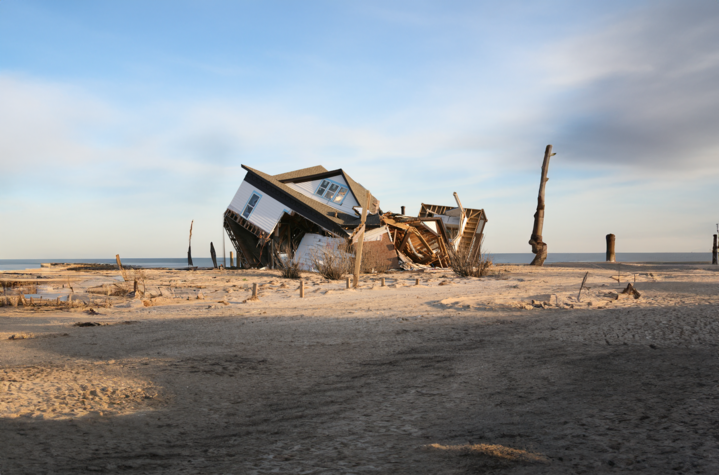
A Low-Cost Player in a High-Profit Industry
Capturing Riches in a Niche Insurance Sector
| Welcome to Porter & Co.! If you’re new here, thank you for joining us… and we look forward to getting to know you better. You can email Lance, our Customer Care Concierge, at this address, with any questions you might have about your subscription… The Big Secret on Wall Street… how to navigate our website… or anything else. You can also email our “Mailbag” address at: [email protected]. Paid subscribers can also access this issue as a PDF on the “Issues & Updates” page here. |
It was a lean Christmas for the Borel family.
In rural 1940s Texas, it cost a lot to feed and clothe six kids. But dad Clarence had landed a modest but steady job installing insulation. And one December night, he brought home a bag full of sparkling “snow” crystals to decorate the family’s meager Christmas tree.
It was asbestos dust from the insulation company where he worked… the closest thing you’d get to snow in Texas.
And there was plenty of the snowy-white material… enough to take to school to dust the trees in the Borel kids’ classrooms, too.
It was a Christmas “miracle.”
It also killed Clarence Borel – and, ultimately, nearly destroyed one of the most venerable insurance organizations in the world.
| The Big Secret System-wide automation and other operational efficiencies give this insurance company a major cost advantage over its peers. This allows it to price its policies at highly attractive rates, driving rapid growth and market-share gains, while delivering industry-leading profitability. |
Clarence – who later died of pulmonary asbestosis and mesothelioma at age 57 – was one of the first individuals to sue an asbestos company in a landmark 1969 case, Borel v. Fibreboard Paper Products Corporation. He argued, rightly, that the insulation company was aware of the dangers of the toxic flame-retardant, and purposely failed to warn its employees. Clarence testified during his court case that he and his fellow workers thought the dust was harmless and would “dissolve as it hit your lungs.” (Asbestosis, a fatal lung condition, had been medically documented since the 1930s.)
Clarence Borel passed away before the Texas court ruled in his favor and awarded his widow $1 million in damages. But his posthumous victory opened the floodgates…
With Borel v. Fibreboard, the court set a precedent that companies should be held liable for exposing workers to asbestos. Over the next decade, about 25,000 asbestos-related lawsuits swamped the judicial system nationwide, resulting in payouts of about $540 billion between 1970 and 1995.
In mid-20th-century America, asbestos – once hailed as a “miracle” fireproofing substance – was everywhere: insulation, popcorn ceilings, plaster, caulk, vinyl, roof tar, blankets. As a company owner, if you’d used the deadly mineral in any of your products, you could now expect a giant lawsuit from a customer or employee dying of lung disease.
Of course, you likely wouldn’t be paying those damages. Your insurance company would.
And that’s how Lloyd’s of London almost went bankrupt.
Just Because You Can Doesn’t Mean You Should
You’ve likely seen Lloyd’s of London mentioned in the news – it’s a long-standing British institution with a reputation for insuring almost anything. In its early days in the late 1600s Lloyd’s was a marketplace for marine insurance, and later branched out into a field known as E&S, for excess and surplus insurance – covering the specialty risks that standard carriers often avoid. Lloyd’s issued both the first auto-insurance policy in 1904 (back when cars were an exotic new invention) and the first spacecraft insurance policy in 1965.
Many of Lloyd’s weirder policies are likely publicity stunts, but they make for entertaining reading. Rock stars Bruce Springsteen and Bob Dylan insured their money-making voices with Lloyd’s for millions of dollars, and a score of famous leading ladies (Betty Grable, Tina Turner, Jamie Lee Curtis…) have taken out policies on various valuable body parts. Rock group Kiss lead man Gene Simmons has insured his iconic tongue. Perhaps one of the oddest Lloyd’s insurance policies protected silent-film comedian Ben Turpin’s permanently crossed eyes. If they ever became uncrossed, Lloyd’s would have to pay $25,000. (The eyes remained crossed until Turpin’s death at age 70.)

But… as Lloyd’s discovered when American asbestos claims began rolling across the pond… just because you can insure something doesn’t mean you should.
Eager for a slice of the burgeoning American insurance market during the 1930s and ’40s, Lloyd’s sold general liability policies to U.S. companies like candy (or, like sacks of sparkly asbestos “snow”). These policies were remarkably vague and covered all manner of disasters.
Then a bona-fide disaster – in the form of asbestos poisoning – struck.
Too late, Lloyd’s learned the hard way one of the non-negotiable principles of underwriting: exclusions aren’t optional. Especially for E&S insurers. To offset the greater risks from the non-standard insurance it carries, an E&S insurer must be extremely specific about what risks it will and will not cover – a precise and delicate dance through a minefield.
Lloyd’s insurers had been aware of the growing medical concerns about asbestos as far back as the 1930s, but policies were easier to sell without exclusions. Lloyd’s chose to write broad policies and not to exclude for asbestos… and, in 1970, was left holding the (fireproof) bag.
As one insurance analyst put it, “Unlimited claims were about to come calling on unlimited liability.”
Because of the way Lloyd’s is organized, it took a few years for the massive insurance claims to move down the chain and officially reach the accounting department. When the full impact hit in 1991, it was devastating. That year, Lloyd’s announced its biggest single-year loss in history: $800 million. By 1995, cumulative losses from 1988 through 1992 were recorded at $14 billion.
Lloyd’s high-net-worth individual backers, who’d pledged to accept financial risk in exchange for a steady stream of premiums, now had to make good on that promise. Thousands went bankrupt, and 30 of them committed suicide.
Lloyd’s began writing asbestos and “environmental risks” exclusions into their new policies. But the damage was done.
The unfortunate insurer continued to hemorrhage billions of dollars a year as more asbestos claims rolled in (some aren’t expected to be fully settled until 2050). Eventually, insurance giant and famed investor Warren Buffett stepped in and bailed Lloyd’s out in 2006.
The lesson that investors and E&S insurers all learned – besides not licking the walls or playing with insulation – was clear: Sloppy underwriting can kill. Specialty-insurance companies should pay eagle-eyed attention to inclusion and exclusion, or risk adding more risk to an already chancy business.
That brings us to the recommendation in this issue: a capital efficient specialty insurer that, unlike Lloyd’s, has turned precision underwriting into an art form. (Last year, it roused the ire of several clients for insuring vapes, but specifically excluding vape batteries, which it saw as an unnecessary fire hazard.)
How it fine-tunes this process has a lot to do with why we recommend it…
The Wonderful World of Negative-Cost Capital
This content is only available for paid members.
If you are interested in joining Porter & Co. either click the button below now or call our Customer Care Concierge, Lance James, at 888-610-8895.